Missed the NASEO 2023 Annual Meeting in Portland, Oregon? Don’t worry! We’ve compiled an executive summary with the latest updates on federal energy efficiency programs and key takeaways.
State energy offices that participated in the event had numerous inquiries for the U.S. Department of Energy (DOE), particularly in light of the much-anticipated release of, and October 2023 update to, the Home Energy Rebates Program guidelines as well as the recently updated (as of October 2023) guidelines for the Training for Residential Energy Contractor Grant Program.
Integrating Multiple Programs for Maximum Impact
DOE’s Training for Residential Energy Contractor (TREC) Grant Program doesn’t operate in isolation. Not only does it help build up the workforce for DOE’s Home Energy Rebates Program, but it also impacts the same individuals who qualify for many similar federal funding programs, including revolving loan funds, weatherization programs, other contractor grant programs, residential energy efficiency tax credits, and more.
Deploying these funds together in the same households would significantly bolster the energy and cost savings for each participant – the majority of whom are low-income residents in disadvantaged communities. However, each of these federal programs is nuanced, as they have different eligibility criteria, reporting requirements, energy-saving performance requirements, etc. There is currently no federal interagency guidance on how these programs can be layered. States re-iterated their request for DOE to work with other federal agencies to provide clear guidelines for how states may braid their TREC and Home Energy Rebates formula funding together.
Other takeaways:
Accountability and Measurability in State Training Programs
State energy offices, already overwhelmed with grant applications and their normal programmatic responsibilities, are struggling to navigate the Community Benefits Plan (CBP) component of their TREC applications. DOE recently added the CBP as a new requirement for all DOE funding opportunities.
DOE emphasized the need for states to make their community benefits plan goals specific, measurable, achievable, realistic, and time-bound. DOE SCEP emphasized that applicants should clearly demonstrate that they understand their target impact audience. To do this, states need to involve community-based organizations (CBO) and individuals directly in their program planning as early as possible. At the CBO level, this could mean bringing them into states’ advisory group meetings, while at the individual level, it could entail surveying community members to get their feedback on workforce barriers, community energy efficiency needs, and other information that could help inform the state’s program design. For example, if a state wants to target its TREC formula funds in a faith-based community because there is a disproportionate gap in contractor availability there, they should involve religious organizations in their program design discussions.
Focus on the individual: DOE wants plans to demonstrate a deep understanding of the community they intend to serve – both by showing involvement from community-based organizations that represent disadvantaged communities (e.g., through advisory group meetings), as well as through SMART goals.
Enhancing the Appeal of the Energy Efficiency Industry
State energy officials and industry experts recognized the need to make the energy efficiency industry more appealing to prospective job seekers. Among the solutions that were discussed were better marketing, energy efficiency education for K-12 students as a means of nurturing future talent, improving diversity within contractor companies’ employee bases, and increasing worker access to wrap-around services (e.g., transportation, childcare, etc.). Given that the lack of access to childcare and transportation persists as a major barrier to worker participation in training programs, industry speakers encouraged state energy offices to include wrap-around services as a key component of their TREC programs.
Additionally, energy-efficient product manufacturers can play a crucial role in enhancing the appeal of the energy efficiency industry by:
- driving awareness of energy efficiency career options and benefits
- supporting states’ training programs by providing their equipment to training facilities and contractors, which helps contractors gain confidence and knowledge about new technologies that can be shared with customers,
- directly participating in training sessions, and
- offering expertise to improve the overall training experience for new and experienced contractors
Flexibility in Training Programs
To attract entry-level talent from disadvantaged communities to the residential energy efficiency industry, federal and state government and industry speakers at the conference stressed the importance of reducing barriers to entry. States will be tailoring training to people of varying backgrounds, circumstances, and learning styles. For example, individuals in rural areas may need remote training options, and offering a mix of hybrid online/in-person courses can help drive higher participation among these residents.
Recognizing that not everyone is a good test taker, speakers discussed the importance of flexible training options, such as bite-sized credentials like the BPI Building Science Principles certificate program. Industry speakers at NASEO highlighted how some training participants struggle with sit-down exams, so offering an entry-level certificate program with multiple options for advancement reduces a key barrier for non-traditional learners who still have a high potential for succeeding in an energy efficiency career. These nationally recognized credentials provide an accessible pathway for job seekers to explore the diverse areas within the energy efficiency industry while maintaining high-quality industry standards.
Energy Efficiency Education and Training
With DOE Home Energy Rebates funding on the horizon, homeowners will soon be eligible to receive rebates for highly efficient electric appliance upgrades and energy efficiency measures.
For states’ TREC and Home Energy Rebates Programs to be successful, proper education and awareness for both homeowners and contractors will need to be prioritized as an essential component.
- Homeowners need to be aware of the potential for temporary increases in energy costs when transitioning to electric systems.
- Contractors, in turn, will also need to be trained on how to communicate with homeowners to prevent frustration and confusion as well as to encourage energy-saving behavior.
Homeowners will need to take action to reduce their energy consumption in order to reap the full benefits of electrification. This means weatherizing their homes to extend the life of their electric heat pump, unplugging electronics when not in use, turning off lights when leaving a room, and turning the thermostat down in the winter (U.S. DOE recommends 68 degrees F) and up in the summer (DOE recommends 78 degrees F).
TREC / Home Energy Rebates Timeline
States’ applications for DOE TREC formula funding are due on January 31, 2024.
As state energy offices turn their attention to these applications, DOE speakers at the conference encouraged them to begin bringing their state and local workforce development boards into their TREC advisory group discussions, as they will be important partners in deploying this funding and may be able to contribute deeper insights into where and what the energy efficiency workforce gaps are in the state.
Learn more about how Everblue is helping with implementing the Inflation Reduction Act programs.
 Cold Climate Heat Pump Sizing
1 × $2,250.00
Cold Climate Heat Pump Sizing
1 × $2,250.00  Combustion Appliance Zone Training
1 × $699.00
Combustion Appliance Zone Training
1 × $699.00  ENERGY STAR v3 Training and Testing
2 × $499.00
ENERGY STAR v3 Training and Testing
2 × $499.00  PV203 Solar Sales Professional
1 × $699.00
PV203 Solar Sales Professional
1 × $699.00  BPI Building Analyst Professional
2 × $1,099.00
BPI Building Analyst Professional
2 × $1,099.00  PV201 Solar PV Installer
1 × $999.00
PV201 Solar PV Installer
1 × $999.00  2012 International Energy Conservation Code
2 × $199.00
2012 International Energy Conservation Code
2 × $199.00  2017 National Electrical Code
1 × $199.00
2017 National Electrical Code
1 × $199.00  BPI AC and Heat Pump Professional
1 × $2,250.00
BPI AC and Heat Pump Professional
1 × $2,250.00  BPI Multifamily Building Analyst
1 × $1,999.00
BPI Multifamily Building Analyst
1 × $1,999.00  LEED AP O+M Exam Prep
1 × $499.00
LEED AP O+M Exam Prep
1 × $499.00  RESNET HERS Rater Training
1 × $2,099.00
RESNET HERS Rater Training
1 × $2,099.00  NABCEP PV Associate
1 × $999.00
NABCEP PV Associate
1 × $999.00  NABCEP PV Design Specialist
1 × $1,299.00
NABCEP PV Design Specialist
1 × $1,299.00  NABCEP PV Installation Professional
1 × $1,999.00
NABCEP PV Installation Professional
1 × $1,999.00  NABCEP PV Commissioning Specialist
1 × $1,999.00
NABCEP PV Commissioning Specialist
1 × $1,999.00  NABCEP PV System Inspector
1 × $1,999.00
NABCEP PV System Inspector
1 × $1,999.00  NATE Certification Training
1 × $399.00
NATE Certification Training
1 × $399.00  LEED AP BD+C Exam Prep
1 × $499.00
LEED AP BD+C Exam Prep
1 × $499.00  Cold Climate Heat Pump Sizing
Cold Climate Heat Pump Sizing  Combustion Appliance Zone Training
Combustion Appliance Zone Training  ENERGY STAR v3 Training and Testing
ENERGY STAR v3 Training and Testing 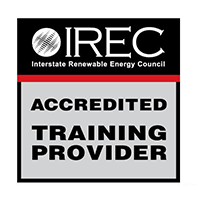 PV203 Solar Sales Professional
PV203 Solar Sales Professional 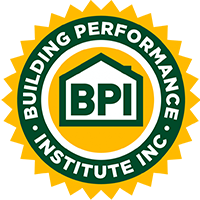 BPI Building Analyst Professional
BPI Building Analyst Professional  2012 International Energy Conservation Code
2012 International Energy Conservation Code  2017 National Electrical Code
2017 National Electrical Code 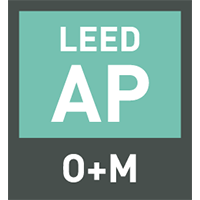 LEED AP O+M Exam Prep
LEED AP O+M Exam Prep 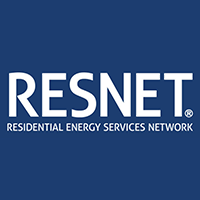 RESNET HERS Rater Training
RESNET HERS Rater Training 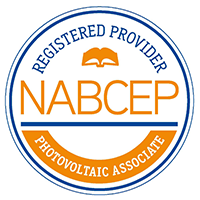 NABCEP PV Associate
NABCEP PV Associate 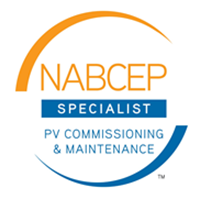 NABCEP PV Commissioning Specialist
NABCEP PV Commissioning Specialist 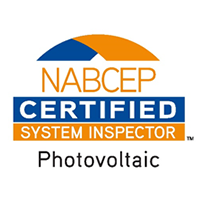 NABCEP PV System Inspector
NABCEP PV System Inspector 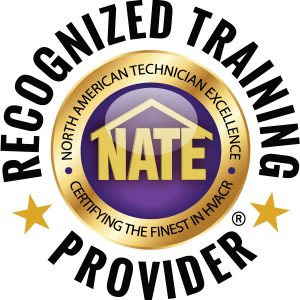 NATE Certification Training
NATE Certification Training 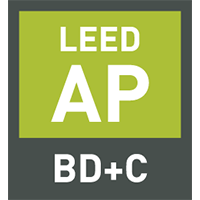 LEED AP BD+C Exam Prep
LEED AP BD+C Exam Prep